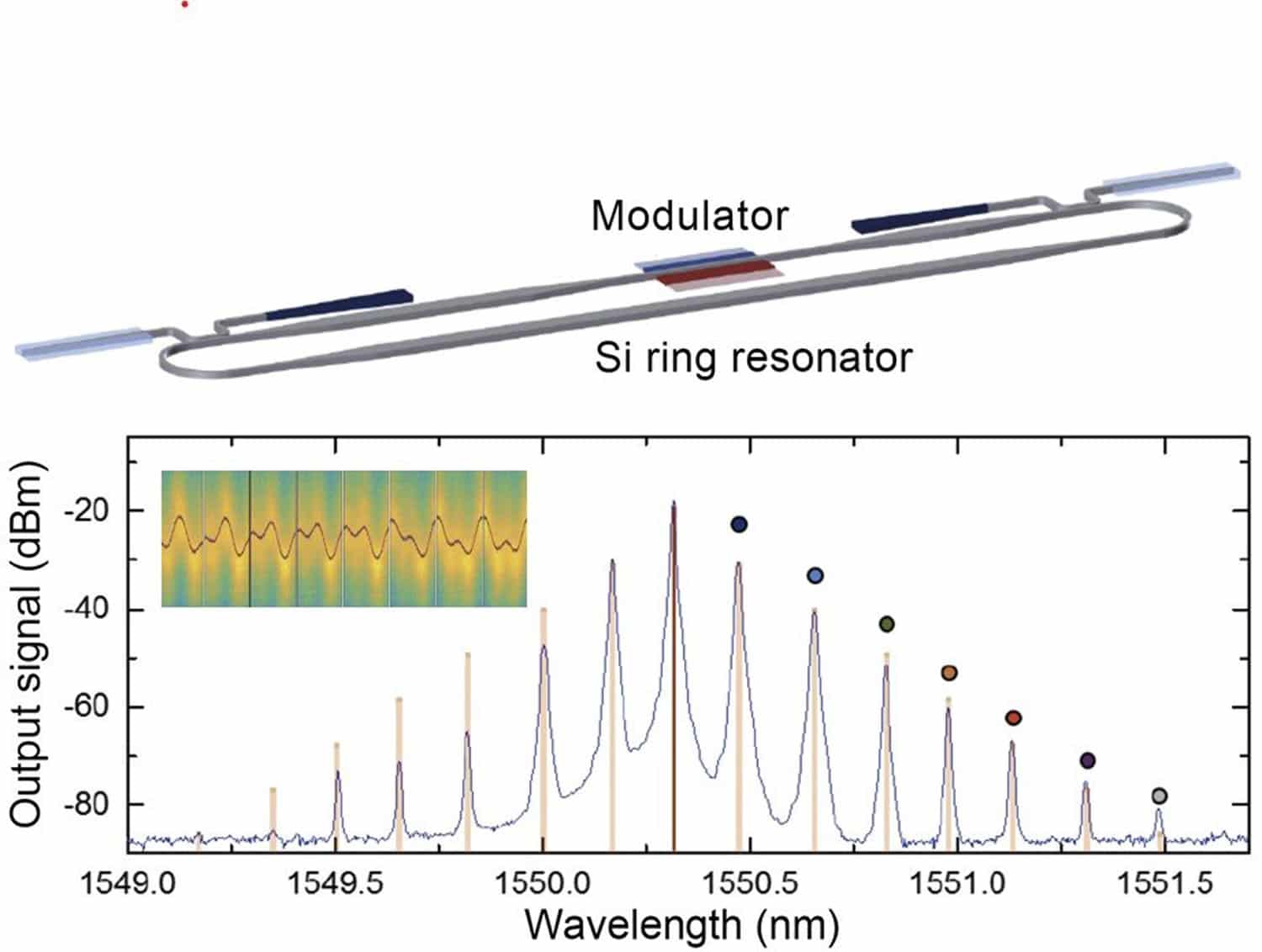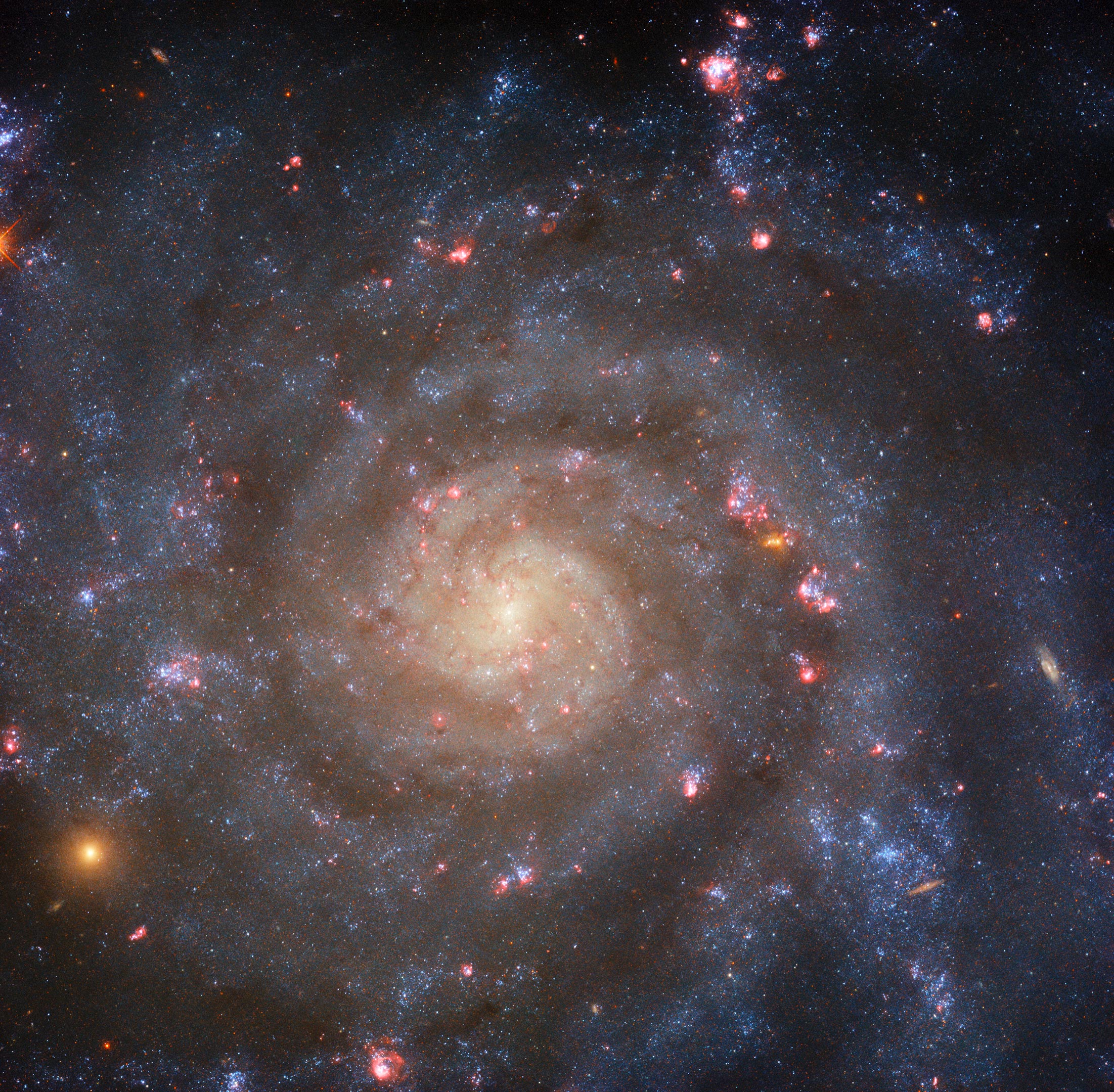The Great Pyramid of Giza might be the most iconic structure humans ever built. Ancient civilizations constructed archaeological icons that are a testament to their greatness and persistence. But in some respects, the Great Pyramid stands alone. Of the Seven Wonders of the Ancient World, only the Great Pyramid stands relatively intact.
A team of scientists will use advances in High Energy Physics (HIP) to scan the Great Pyramid of Khufu at Giza with cosmic-ray muons. They want to see deeper into the Great Pyramid than ever before and map its internal structure. The effort is called the Explore the Great Pyramid (EGP) mission.
The Great Pyramid of Giza has stood since the 26th century BC. It’s the tomb of the Pharoah Khufu, also known as Cheops. Construction took about 27 years, and it was built with about 2.3 million blocks of stone—a combination of limestone and granite—weighing in at about 6 million tons. For over 3,800 years, it was the tallest human-made structure in the world. We see now only the underlying core structure of the Great Pyramid. The smooth white limestone casing was removed over time.
The Great Pyramid is well-studied, and over the years, archaeologists have mapped out the interior structure. The pyramid and the ground under it contain different chambers and passageways. Khufu’s (Cheops’) chamber sits roughly in the pyramid’s center.
This figure is an elevation diagram of the interior structures of the Great Pyramid. The inner and outer lines indicate the pyramid’s present and original profiles. 1. Original entrance 2. Robbers’ Tunnel (tourist entrance) 3, 4. Descending Passage 5. Subterranean Chamber 6. Ascending Passage 7. Queen’s Chamber & its “air-shafts” 8. Horizontal Passage 9. Grand Gallery 10. King’s Chamber & its “air-shafts” 11. Grotto & Well Shaft. Credit: By Flanker, CC BY-SA 3.0
In recent times, archaeological teams have used some high-tech methods to probe the insides of the pyramids more rigorously. In the late 1960s, American Physicist Luis Alvarez and his team used muon tomography to scan the pyramid’s interior. In 1969, Alvarez reported that they examined 19% of the pyramid and found no new chambers.
In 2016-17, the ScanPyramids team used non-invasive techniques to study the Great Pyramid. Like Alvarez before them, they used muon tomography, along with infrared thermography and other tools. Their most significant discovery is the “Big Void,” a massive void above the Grand Gallery. The discovery was published in the journal Nature and is considered one of the most significant scientific discoveries that year.
Muons are elementary particles similar to electrons but more massive. They’re used in tomography because they penetrate deeply into structures. More deeply than even X-rays can.
Cosmic ray muons are created when high-energy particles known as cosmic rays slam into Earth’s atmosphere. Cosmic rays are fragments of atoms—high-energy protons and atomic nuclei— that constantly stream into Earth from the Sun, outside the Solar System, and outside the galaxy. When these particles collide with Earth’s atmosphere, the collision produces showers of secondary particles. Some of those particles are muons.
This diagram shows what happens when a primary cosmic particle collides with a molecule of atmosphere, creating an air shower. An air shower is a cascade of secondary decay particles, including muons, indicated with the symbol ?. Credit: By SyntaxError55 at the English Wikipedia, CC BY-SA 3.0
Muons are unstable and decay in only a couple of microseconds or millionths of a second. But they travel at near light speed, and at such a high velocity, they can penetrate deeply before they decay. There’s an unending source of muons from the cosmic rays that constantly bombard Earth. The task in muon tomography is to measure the muons effectively.
Muon tomography is used in different applications, like examining shipping containers for contraband. Recent technological innovations in muon tomography increase its power and lead to new applications. For example, scientists in Italy will use muon tomography to image the inside of the volcanic Mount Vesuvius, hoping to understand when it might erupt again.
The Explore the Great Pyramid (EGP) mission uses muon tomography to take the next step in imaging the Great Pyramid. Like ScanPyramids before them, EGP will use muon tomography to image the structure’s interior. But EGP says that their muon telescope system will be 100 times more powerful than previous muon imaging. “We plan to field a telescope system that has upwards of 100 times the sensitivity of the equipment that has recently been used at the Great Pyramid, will image muons from nearly all angles and will, for the first time, produce a true tomographic image of such a large structure,” they write in the paper explaining the mission.
EGP will use very large telescope sensors moved around to different positions outside the Great Pyramid. The detectors will be assembled in temperature-controlled shipping containers for ease of transportation. Each unit will be 12 m long, 2.4 m wide, and 2.9 m tall (40 ft long, 8 ft wide, and 9.5 ft tall.) Their simulations used two muon telescopes, and each telescope consists of four containers.
On the left is an illustration of the containers that make up the telescope. On the right is an illustration of how the telescope will be set up on-site. Credit: Explore Great Pyramid mission/Bross et al. 2022.
There are five critical points in the EGP mission:
- Produce a detailed analysis of the entire internal structure which does not just differentiate between stone and air, but can measure variations in density.
- Answer questions regarding construction techniques by being able to see relatively small structural discontinuities.
- The large size of the telescope system yields not only the increased resolution, but enables fast collection of the data, which minimizes the required viewing time at the site. The EGP team anticipates a two-year viewing time.
- The telescope is very modular in nature. This makes it very easy to reconfigure and deploy at another site for future studies.
- From a technical perspective, the system being proposed uses technology that has been largely engineered and tested and presents a low risk approach.
EGP is still building telescope prototypes and determining which data-handling techniques they will use. Along the way, they’re doing simulations and other work to prepare for the mission. One critical piece is how they’ll corral all those muons into a tomographic image.
But the team is confident in the work they’ve done so far and satisfied with their new approach. EGP says their effort will create an actual tomographic image of the Great Pyramid for the first time, rather than a 2d image.
“The Exploring the Great Pyramid Mission takes a different approach to imaging large structures with cosmic-ray muons. The use of very large muon telescopes placed outside the structure, in our case, the Great Pyramid of Khufu on the Giza plateau, can produce much higher resolution images due to the large number of detected muons. In addition, by moving the telescopes around the base of the pyramid, true tomographic image reconstruction can be performed for the first time.”
Most of EGP’s work so far has been data simulations. But they won’t be starting from scratch when they build the telescope. “The detector technology employed in the telescopes is well established, and prototyping of specific components has already begun,” they write.
When ScanPyramids discovered the Big Void in 2017, it was big news. It caused some controversy, too. Egyptologist Zahi Hawass pooh-poohed the findings. He told the New York Times that “They found nothing…This paper offers nothing to Egyptology. Zero.”
But most other Egyptologists embraced the discovery and its scientific nature. Physicists were supportive of the discovery, too. Particle physicist Lee Thompson told Science that: “The scientists have “seen” the void using three different muon detectors in three independent experiments, which makes their finding very robust.”
There’s bound to be some drama when scientists use modern high-energy physics to probe one of humanity’s most ancient archaeological treasures. Some Egyptologists seem possessive and might view physicists as interlopers in their field. They might not like physicists using mysterious particles from outer space to open the veil on our ancient past.
It looks like they’ll have to get used to it.
Originally published on Universe Today.
Reference: “Tomographic Muon Imaging of the Great Pyramid of Giza” by Alan D. Bross, E.C. Dukes, Ralf Ehrlich, Eric Fernandez, Sophie Dukes, Mohamed Gobashy, Ishbel Jamieson, Patrick J. La Riviere, Mira Liu, Gregory Marouard, Nadine Moeller, Anna Pla-Dalmau, Paul Rubinov, Omar Shohoud, Phillip Vargas and Tabitha Welch, 16 February 2022, Physics> Instrumentation and Detectors.
arXiv:2202.08184
Note: This article have been indexed to our site. We do not claim legitimacy, ownership or copyright of any of the content above. To see the article at original source Click Here
















